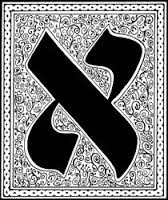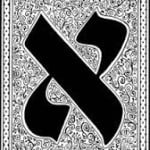In the midst of a sea of unknowns in our reality, G-d has always been the anchor and His Promises have always been the signpost. Yet even those who attempt to walk in faith are left at times in a deep quandary. G-d is infinite and beyond comprehension .We are after all , finite and of limited understanding. How can the finite relate to the Infinite? How can the finite offer thanks and prayer to He who is truly beyond understanding. The idea that man can come close to G-d in prayer and relationship seems to be inherently impossible.As we are told;
“For Hashem your G-d is a consuming fire”(Deuteronomy 4:24).
Yet , on the other hand the book of Vayikra (Leviticus) is all about coming close in relationship with Hashem. That is the source of the Hebrew word for the sacrifices ( korbanot) described so extensively in the book of Vayikra, which is a word rooted in another Hebrew word describing closeness ( karov).
That seemingly impossible relationship of prayer can only be possible , though, when it proceeds from two directions. This truism is revealed in the first word of the Torah portion, Vayikra ( and He called.)
When G-d called Moshe to enter the Sanctuary for the first time after its construction, the word Vayikra is written in such a way that it ends with the letter “Aleph “shrunken in size. Our sages explain the small “Aleph” with a Midrash that points to Moshe’s trait of humility. It explains that as Moshe wrote down the Torah, he wanted to minimize his own importance. He shrunk the letter Aleph so as to minimize the fact that G-d called out to him. By shrinking the letter “Aleph”, the word VaYikra seems to be read as VaYikar which is translated as “happened upon”. We see the use of that word VaYikar to describe G-d’s encounter with Bilaam; “G-d happened ( VAYIKAR) upon Balaam”( Numbers 23:4). By so doing Moshe minimized the incredible fact that Moshe , out of all the human beings on the earth, was called forward by G-d. It was Moshe’s humility, symbolized by that Aleph that made him a vessel worthy of the encounter.
On the other hand, Rabbi Menachem Nachum of Chernobyl, sees in the shrunken Aleph as a “hint” pointing in the other direction. The verse describing Hashem calling Moshe to enter the sanctuary does not use Hashem’s name. It simply says “and He called”. The “Chernobler” describes the Aleph as referring to Alufo Shel Olam ( the Chief of the Universe). The Aleph is used in such a way to teach us that in order to allow finite mortals to enter into dialog with the Infinite, G-d achieves a type of contraction ( tzimtzum) so that He makes room for us to enter. This restriction is not an actual constriction because Infinite is always infinite. Yet the perception of Hashem’s relationship ( the Hanhaga) with the world is what goes through this constriction and allows the mortal to feel empowered to enter into the realm of relationship with the Divine.
Clearly the relationship of prayer and dialog is facilitated by man’s ability to be humbled, on the one hand and G-d’s desire to be gracious, on the other. This two- directional relationship is symbolized by the very structure of the letter Aleph. The written letter Aleph is formed by three other letters. Two Yuds , top and bottom, and a Vav that connects them . The top Yud represents the Infinite G-d, while the lower one represents the mortal man of faith. The Vav which connects them is the letter that when added to a word connotes the word “and” and thereby helps form the relationship.
As a result we understand from this Aleph that that relationship with G-d is not only yearned for , it is in fact possible. It is no surprise then that when Hashem revealed His will and torah at mount Sinai to His people and subsequently to the whole world ,the first letter He uttered was an Aleph.

